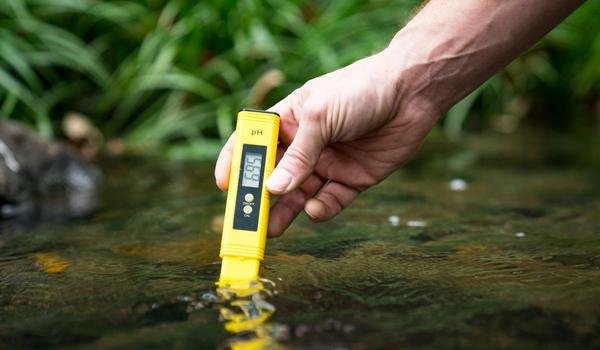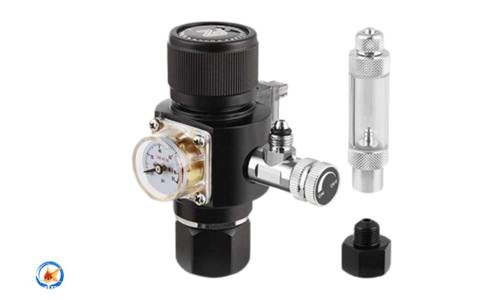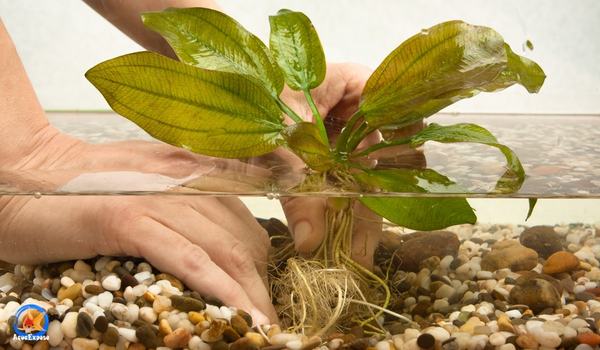Aquariums are one of the most popular home decor items, and they’re not hard to come by either. It’s a really cost-effective way to beautify and functionalize any area of your home. However, before you go out and spend a lot of money on an aquarium, it’s important to know what the benefits and drawbacks are.
This blog provides an overview of both the costs and benefits of keeping a planted aquarium and some things to consider when starting one. So whether you’re looking for an aquarium that will brighten up your living space or provide some ecological enrichment, this blog has the information you need!
Also, if you’re looking to add a little bit of aquatic beauty to your home but don’t want to break the bank, aquascaping is the perfect way to go. Aquascaping is the art of arranging aquatic plants in a tank, and it can be very impressive when done well. This article will guide you on how to create a stunning planted aquarium on a budget.
Why is a planted aquarium important to have?
Because fish and plants work together in an aquarium to create a healthy ecosystem, an established aquarium is easier to maintain than a new one since it’s already built with natural components in mind. Aquatic plants help feed the fish while providing additional filtration and oxygen. Plants absorb nutrients and produce oxygen while they grow, providing cover and habitats for fish and other aquatic life. Most plants also help maintain the aquarium water’s pH and reduce the levels of ammonia and nitrates.
A planted aquarium is a beautiful addition to any home, and keeping one has many benefits. However, keeping an aquarium can be expensive, but They can offer a beautiful addition to any room in the house and provide a relaxing environment for you and your fish. Also, they come with a host of supplementary benefits, like providing oxygen and reducing stress in the home.
The costs and upkeep of an aquarium can be expensive, so it’s vital to understand the advantages and disadvantages before going out and spending money on an aquarium. We work out some prose and drawbacks below-
Benefits of keeping a planted aquarium
- Adds visual interest to any room
- Increases oxygen levels in the water
- Reduces stress and anxiety
- Provides a natural habitat for fish and other aquatic creatures
- Enhances air quality with the help of beneficial plants
- Helps purify water by removing toxins
- Reduces noise levels enhances well-being and mood
Drawbacks of keeping a planted aquarium
- Algae growth: Algae growth can be a problem in planted aquariums, as the plants and fertilizers can encourage algae growth.
- High Maintenance: Planted aquariums require regular maintenance and careful monitoring to ensure the plants remain healthy and thriving
- Costly: Fish need to be well-lit and provide appropriate filtration, which can add to the cost of keeping an aquarium. Also, planted aquariums require more expensive equipment, such as specialized lighting, water pumps, and substrates, which can be expensive.
- The difficulty of Planting: Planting and arranging the plants aesthetically pleasingly can be difficult.
- Plant Loss: Plant loss can be an issue in planted aquariums due to the delicate balance of nutrients, water quality, and other factors.
Things To Consider When Starting A Planted Aquarium
It can be set up on a budget without sacrificing quality. When starting, consider the aquarium setup – will it be tropical, saltwater, or coldwater? Once you’ve chosen your fish species, research plant varieties compatible with your aquarium setup. Be cautious about adding too many plants at once, as this can stress out your fish and tank inhabitants. Finally, add decorations and plants gradually over time to avoid any problems. Have fun creating your planted aquarium – it will be a treasured addition to your home.
What do I require to get going in my planting aquarium? Begin with a 20-gallon height tank, an aquarium stand, and a LED strip light.
Suggested aquarium equipment:
- Aquarium gravel
- Quality Substrate for planted aquarium
- Liquid nutrient for lush and healthy aquarium plants (Seachem Flourish™ Excel- recommended)
- Plant fertilizer
- Coralife Digital Thermometer
- LED light
- Power filter
- Submersible Heater (100W- recommended)
- Air pump
- 3 Driftwood
- Gravel vacuum
- Fish net
- Aquarium water test kit
- Water change buckets
- Plant trimming scissors
Suggested plants for a planted aquarium:
- Java moss (Qty-3)
- Anubias Nana (Qty-6)
- Anubias barteri (Qty-3)
- Java Fern (Qty-3)
- Amazon Sword (Qty-1)
- Cryptocoryne wendtii (Qty-6)
- Micro Sword (Qty-6)
- Green Myrio (Qty-1)
- Ludwigia (Qty-2)
- Rotala Indica (Qty-2)
- OR – Aquarium Plant Pack – Standard
Suggested fishes for a planted aquarium:
If your tank is small, or you are just starting, consider a school of small, peaceful fish, like-
- Cardinal Tetras
- Rummynose Tetras
- Neon Tetra
- Rasboras
- Guppy
- Shrimp
(These fish get along well with plants and can provide the necessary movement in the tank.)
Larger, more active fish are a good choice for larger tanks or those with a higher concentration of plants. Cichlids, for example, are great for larger tanks and come in various colors and patterns. They are also very good at controlling algae growth. Also below are great for large tanks-
- Cichlids
- Albino Aeneus Cory Cats
- Neon Blue Dwarf Gourami
- Angelfish
- Corydora Catfish
Step 1: Quality Plant Substrates Can Help You Set Up and Start

- Set up an Aquarium and Stand. (It is also essential to have an aquarium stand that can withstand daily stressors such as water changes and plant growth – otherwise, your aquarium could quickly become a disaster zone!)
- Add a high-quality, mineral-rich substrate (this is the foundation for long-term success).
- When adding substrate to an aquarium, always rinse it well before adding it. This will help to reduce the amount of sediment that may accumulate over time and create problems such as high water temperature or low oxygen levels.
- To keep your aquarium healthy, you’ll need to fill it with dechlorinated water and install a filter and heater.
Why need the right substrate?
Choosing the right substrate is essential in setting up a planted aquarium. There are many different substrates, but some of the best include coconut coir, peat moss, and sponges. Wetting the substrate before adding plants will ensure that they can quickly absorb water and grow with health. As aquatic plants require around 20% water volume for growth, aquariums should never contain more than this – excess water will cause algae growth and decrease fish tank quality.
Step 2: pH testing and hardness (KH) management

- Once the aquarium is up and running, remember to check the pH regularly. Adjust the pH between 6.5 and 7.5 (Seachem Acid Buffer or Seachem Neutral Regulator) depending on your source water with a water conditioner. Both fish and plants thrive in this pH range.
- Use Seachem Equilibrium to remineralize in areas with tough water.
Why need the right pH testing?
Plants help to regulate the pH and KH levels of aquarium water. Many aquatic plants prefer neutral to slightly acidic water with hard water. With enough aquatic plants, it is easy to maintain water parameters suitable for fish and other aquatic organisms.
Step 3: Add Lighting

- If you’re using a standard fluorescent lamp with an aquarium hood or strip light, you’re not doing your plants any favors. You might be better off investing in a different type of light that specifically targets plant growth. There are many options available, so it’s important to find the right one for your tank and plants.
- It is better to replace the fluorescent lamp with the plant lamp, use two strip lights instead.
Why need lighting for plants?
When setting up an aquarium, lighting is undoubtedly one of the essential aspects.
It’s worth noting that different types of fish thrive in different light levels. For example, tropical freshwater fish like guppies need lots of bright light, while algae-eating fish prefer low-light conditions. So, acquire the correct view before buying any aquatic plants or set up lights.
Step 4: Add Driftwood logs & Rock

To complete your natural look and feel in your aquarium environment – driftwood logs and rocks can be great additions – place them where they best fit!
Step 5: Carbon Dioxide (CO₂)

Adding carbon dioxide can help to regulate water parameters and increase plant growth. To do this, make a small hole in the aquarium’s substrate (using an aquarium drill bit) and insert a CO₂ generator. Replace the air every few months or so as needed.
Step 6: Add water & plants:

- Add water to the tank.
- Fill the midground and background with shorter plants in the foreground, followed by taller plants.
Now it’s time to add some water and plants to your aquarium! When choosing plants, it’s important to consider their size, color, and texture. You’ll also want to ensure they’re compatible with your chosen fish. Once you’ve selected your plants, it’s time to plant them. The best way to do this is to dig a small hole in the gravel and then gently place the plant in the hole. After all of your plants are in place, you can add more gravel around them if needed.
Step 7: Add Fish:

- Before adding fish, allow the aquarium to develop for at least two to three weeks.
- Most of the community fish will do fine in a planted aquarium, so refer to our list of recommended fish (given on starting of this article).
When starting a planted aquarium, it is important to choose the right fish. This means choosing fish that are compatible with plant life and will thrive in an aquarium filled with plants. Many different types of fish can be used for this type of setup. When selecting fish for a planted aquarium, it’s important to consider their behaviors and needs. For example, some fish are known to uproot plants, while others may nibble on plant leaves. It’s best to avoid these species if you want to maintain a healthy and thriving planted aquarium. Instead, opt for peaceful community fish that will coexist well with plants. Popular choices include neon tetras, guppies, and mollies.
Step 7: Set up your aquarium:
Setting up your aquarium is critical in creating a planted aquarium on a budget. You’ll need to choose the right size tank and the appropriate plants and fish for your setup. Additionally, you’ll need to ensure you have the proper lighting and filtration for your aquatic plants. Considering these factors, you can create a stunning planted aquarium without breaking the bank.
Step 8: Maintain your aquarium
Maintaining a planted aquarium is not difficult, but it requires effort.
- First, you need to choose the right plants.
- Second, you must fertilize and care for your plants ( Add Supplementary Plant Nutrients as Needed).
- Third, you need to control algae growth.
- Lastly, you need to perform regular maintenance on your aquarium.
Step 9: Cycle your aquarium
One of the most vital things you could do to ensure a healthy and beautiful aquarium is to cycle it. Cycling means establishing beneficial bacteria in your aquarium that will help to break down waste products and keep your water clean. You can cycle your aquarium by adding fish slowly over time or by using a product like Nitrifying Bacteria.
FAQ:
Q-1: Why choosing the right plants are important for planted aquariums?
Choosing the right plants for your tank is essential -because selecting the wrong type of plant could cause serious problems for your fish. You’ll want to consider both the size and type of plants you want and whether they are compatible with the fish you have. For example, if you have small fish, you’ll want to avoid plants with large leaves that could tear their fins. Similarly, if you have bottom-dwelling fish, you’ll want to choose plants that don’t require too much light or nutrients from the water column. You can create a beautiful and budget-friendly planted aquarium by selecting the right plants.
Q-2: What is the difference between aquatic plants and non-aquatic plants?
- Aquatic plants live in, grow in, or around water, while non-aquatic plants are plants that do not live in, grow in, or around water.
- Aquatic plants are usually found near the water’s edge or in shallow, slow-moving water bodies such as ponds and lakes. They are specially adapted to live in water or wet soils and can obtain their nutrients from the water. Non-aquatic plants, on the other hand, live on land, often in dry soils or with little to no water. They get their nutrients from the soil and can survive in various environments, such as deserts or forests.
- The most apparent difference between aquatic and non-aquatic plants is the way they obtain their nutrients. Aquatic plants can absorb nutrients directly from the water, while non-aquatic plants must get their nutrients from the soil.
- Aquatic plants also typically have more specialized adaptations for living in water, such as floating leaves, modified roots, and specialized stems. Non-aquatic plants do not usually possess these adaptations.
- Aquatic plants are also more vulnerable to environmental changes, such as changes in water temperature, pH, and oxygen levels. Non-aquatic plants, on the other hand, are less affected by ecological changes since they are not submerged in the water.
Q-3: Which lighting should I use for my planted aquarium?
When it comes to aquarium lighting, fluorescents are a popular choice as they provide excellent plant growth while not heating up the tank excessively. HID or High-Intensity Discharge lamps work well for larger aquariums as they use less energy and emit low levels of ultraviolet rays that can harm fish.
Q-4: How much does it cost to set up a planted aquarium?
Costs associated: There are many different types and sizes of planted aquariums, so it takes a lot of work to figure out the cost of owning one. However, depending on the size and type of plant tank you choose, expect to spend anywhere from $100 up to several thousand dollars. However, it typically ranges between $50 and $300. On average, this expense includes gravel, plants, and fake rocks. You may save money by buying plants in bulk or using plant material that has already been composted.
Q-5: How can I create realistic water movement in my aquarium without spending a fortune?
One of the best ways to create realistic water movement in an aquarium is by using a power filter. If you have a cheap budget, an Air filter or Air pump with an air stone can be an option. Or you can use a wave-maker or powerhead for water movement. All these will help to cycle water and create a natural aquatic environment for your fish.
Final Thought!
Including both fish and aquatic plants in an aquarium creates a more sustainable environment for your fish. Fish provide carbon dioxide and nutrients for healthy plant growth, while aquatic plants provide supplementary biological filtration and oxygen to create a clean, healthy environment for fish. This combination makes for a healthier aquarium that is less maintenance-intensive than an aquarium with fish.
Creating a beautiful, budget-friendly planted aquarium is rewarding and fun. Following the steps above, you can set up an aesthetically pleasing and functional aquarium. Just remember to research the type of plants you want, be creative with decoration, and not be afraid to experiment. Cycle the tank before adding any fish or plants. Finally, ensure water quality and filtration, and remember to change the water regularly. With a little effort and care, you can create a stunning planted aquarium on a budget.


